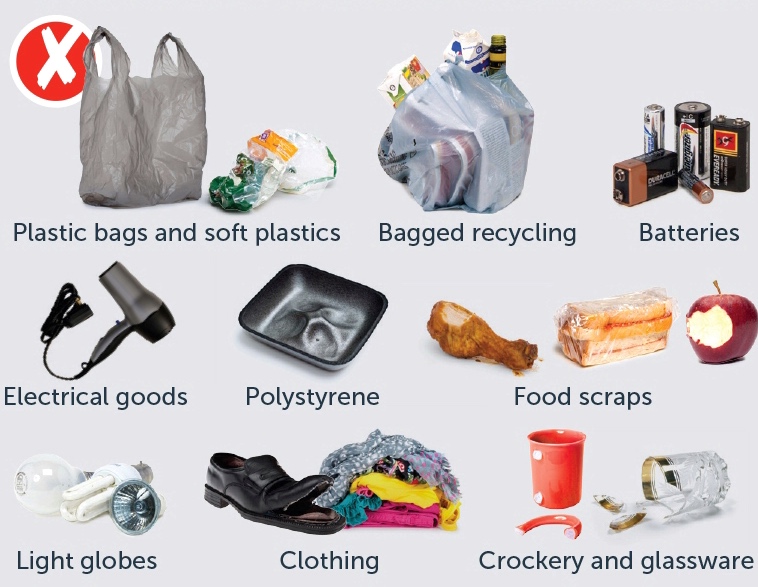In America, we only recylce around 30% of our waste. In reality, 75% of our waste stream can actually be recycled. This low recycling rate has many causes: some don't have access to adequate recycling, people may not be educated on what can or can't be recycled, contamination, etc. For example, wishful or aspirational recycling causes tons of recyclable material to end up in the landfill. Wishful recycling occurs when people recycle items they believe to be recyclable when they really aren't. A greasy pizza box, for example, is not recyclable even though it's made of cardboard because it has a lot of grease and oil on it which are considered contaminants. Contaminants are anything that makes an item non-recyclable. Large amounts of food, grease, and oil are all considered contaminants. When contaminants are found, usually the recycling facility will throw out large loads of recycling, containing both recyclable and non-recyclable materials.
| Recyclable | Non-Recyclable |
|---|---|
| Aluminum Cans | Batteries/Electronics |
| Plastic Bottles | "Biodegradable" and "Compostable" Plastics |
| Cardboard/Paper Bags | Soiled Paper (plates, napkins, cups, etc.) |
| Glass Bottles | Plastic Lined Paper Plates/Cups |


 Non-Recyclable Materials
Non-Recyclable Materials
It's recommended to throw something away if you are unsure if it can be recycled or not, "When in doubt, throw it out". Contaminants aren't just food waste, they include cetain plastic bags, plastic straws, plates and cups lined with plastic, and many more. If there are fewer contaminants in recycling bins, fewer batches of recyclable materials will be thrown out.